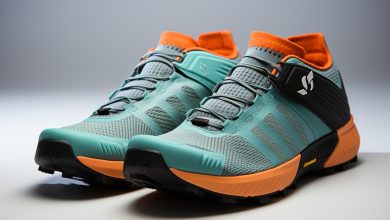How to Choose the Right Running Shoes for Your Specific Needs

Are you tired of dealing with blisters and foot pain every time you go for a run? It’s time to find the right running shoes for your specific needs.
Imagine this scenario: You lace up your new pair of running shoes, feeling the perfect amount of support and cushioning. As you hit the pavement, each step feels effortless and comfortable.
In this article, we will guide you through the process of choosing the ideal running shoes that will enhance your performance and keep your feet happy.
Factors to Consider When Choosing Running Shoes
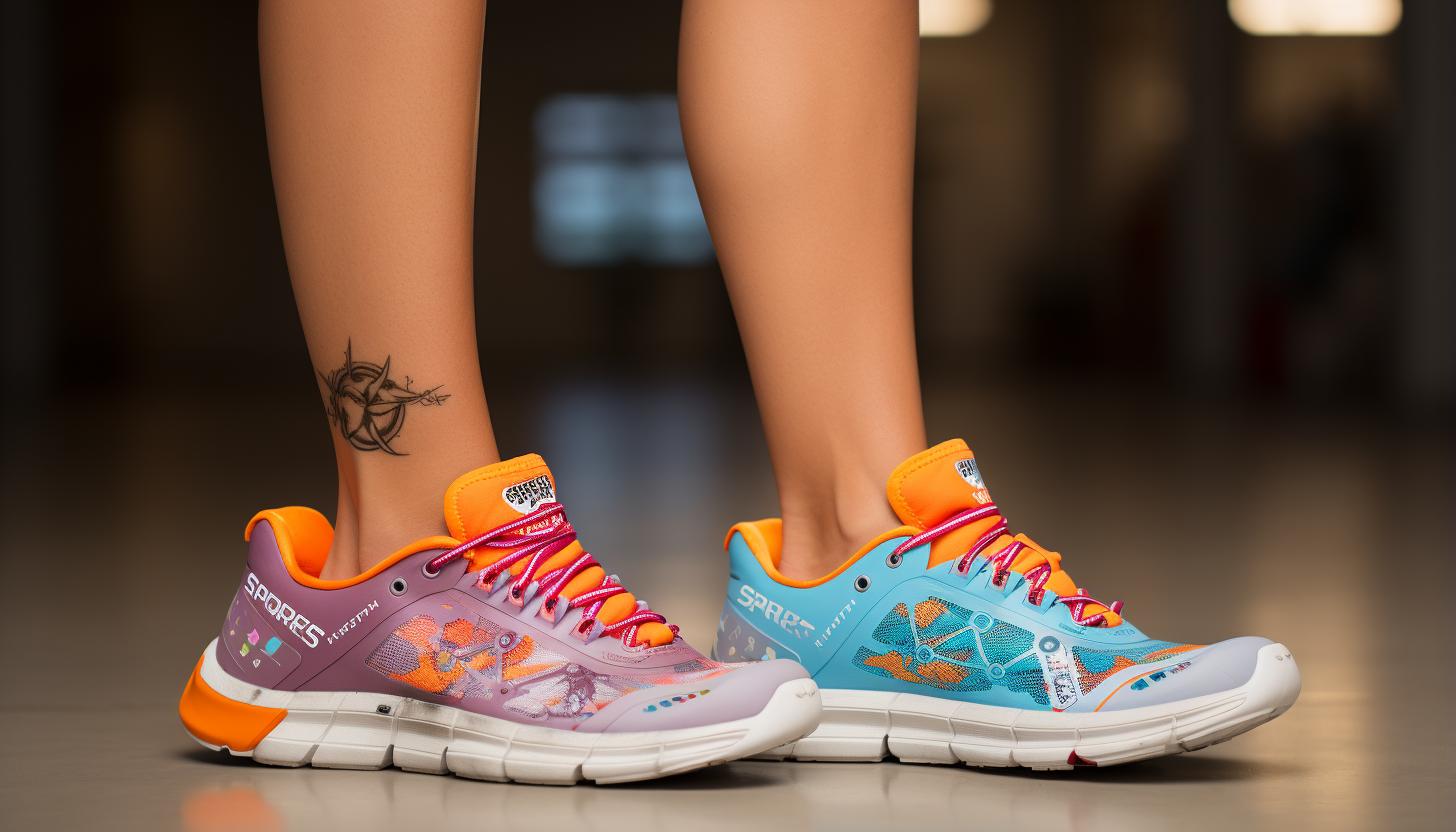
When choosing running shoes, it’s important to consider factors such as your pronation and foot type. These factors play a crucial role in ensuring that you have the right support and comfort while running.
One key factor to consider is impact absorption. Running puts a lot of stress on your joints, so having shoes with good impact absorption can help reduce the risk of injuries such as shin splints or knee pain. Look for shoes that have cushioning in both the midsole and heel area to provide maximum shock absorption.
Another important factor is arch support. Your foot type determines whether you have high arches, low arches, or neutral arches. High-arched feet need more cushioning and flexibility, while low-arched feet require more stability and motion control. Shoes with proper arch support can help distribute your body weight evenly and prevent overpronation or supination.
To determine your pronation and foot type accurately, it’s recommended to visit a specialty running store where they can analyze your gait and provide expert advice. Remember that everyone’s feet are unique, so what works for someone else may not work for you.
Taking into account these factors will ensure that you choose running shoes that offer the right balance of impact absorption and arch support for your specific needs.
Understanding Your Foot Type and Gait
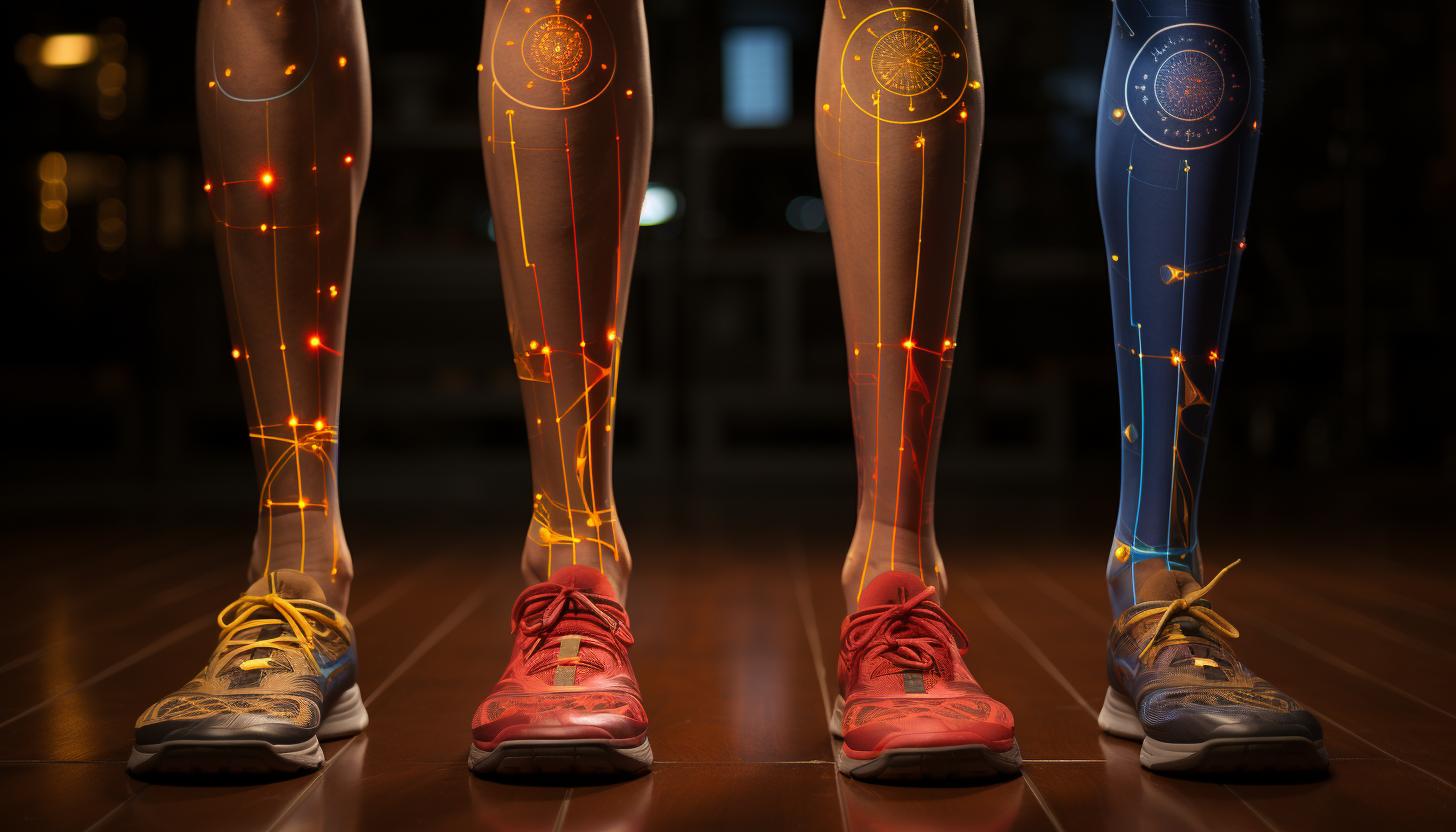
Understanding your foot type and gait is crucial for finding the perfect pair of kicks. By analyzing these factors, you can ensure that you choose running shoes that provide optimal support, comfort, and performance. Here are four reasons why foot pronation analysis and professional gait analysis are essential:
1. Prevent injuries: Identifying your foot pronation pattern helps in selecting shoes with the right amount of stability or cushioning to prevent common running injuries like shin splints or plantar fasciitis.
2. Optimize performance: Understanding your gait allows you to find shoes that promote a more efficient running stride, enhancing speed and endurance.
3. Enhance comfort: Correctly identifying your foot type ensures a proper fit, reducing discomfort during long runs or intense training sessions.
4. Personalized solutions: Foot pronation analysis and gait analysis provide personalized recommendations tailored to your specific needs, ensuring that you get the most out of your running experience.
Determining Your Running Terrain and Distance
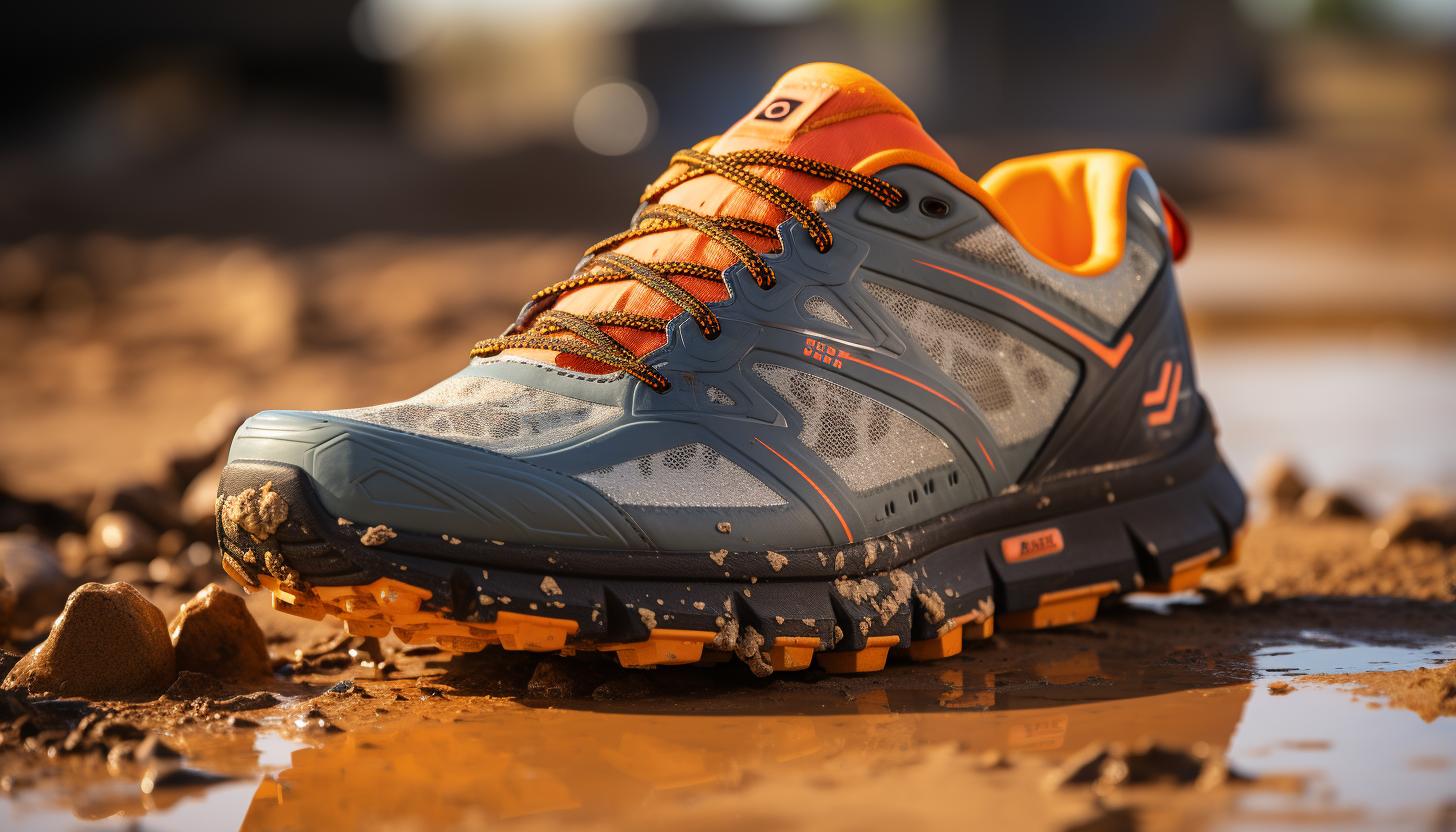
Determining your running terrain and distance is important for selecting the most suitable pair of kicks. When it comes to choosing the right running shoes, understanding the conditions you’ll be running in and how far you plan to go can make a world of difference.
One key factor to consider is the importance of proper shoe cushioning. Different terrains require different levels of cushioning to provide adequate support and protect your feet from impact-related injuries. For example, if you primarily run on hard surfaces like pavement or concrete, you’ll want a shoe with ample cushioning to absorb shock and reduce stress on your joints.
On the other hand, if you’re more inclined towards off-road or trail running, lightweight shoes may offer several benefits. Lightweight running shoes are designed to provide a minimalistic feel while still offering necessary protection and stability. They allow for greater agility and responsiveness on uneven terrain, enabling you to navigate obstacles with ease.
Additionally, considering the distance you plan on covering is crucial when selecting your running shoes. If you’re training for longer distances like marathons or half-marathons, investing in shoes with enhanced cushioning can help prevent fatigue and minimize discomfort during prolonged runs.
The Importance of Proper Shoe Fit
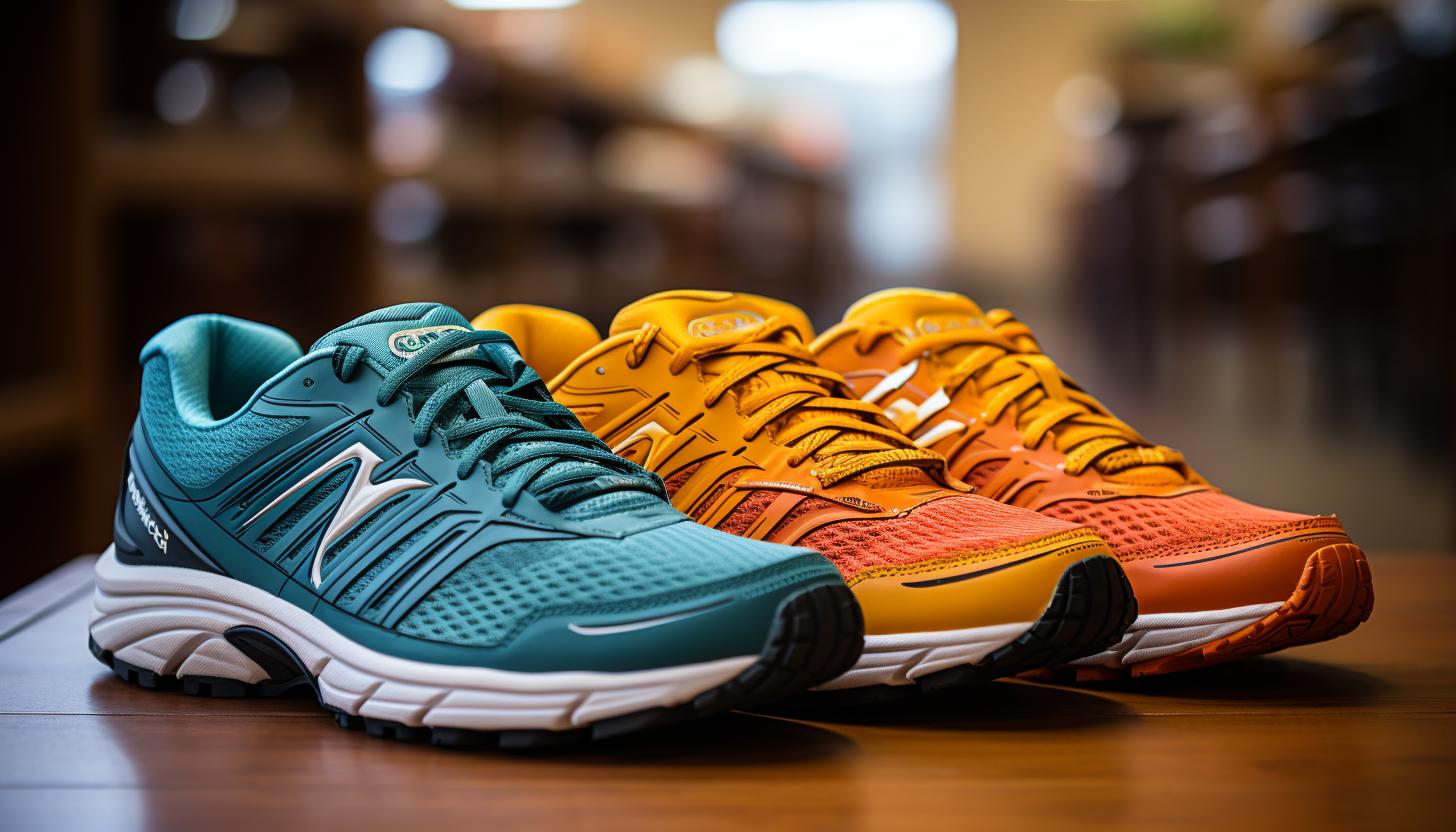
Finding the perfect pair of running shoes involves considering the importance of a proper shoe fit. When it comes to your feet, comfort and support are paramount. Here’s why:
1. Impact of shoe cushioning on foot health: Cushioning plays a crucial role in absorbing shock and protecting your feet from the constant pounding of running. A well-cushioned shoe can help prevent injuries like stress fractures and plantar fasciitis.
2. Role of arch support in preventing injuries: Arch support helps maintain proper alignment and stability, reducing the risk of common running injuries such as shin splints and IT band syndrome. It also provides extra comfort for those with high or low arches.
3. Finding the right size: Your running shoes should fit snugly but not too tight, allowing for natural movement without causing discomfort or blisters. Remember to measure both feet as they may differ slightly in size.
4. Trying before buying: Always try on different brands and models to find the perfect fit for your unique foot shape and running style. Walk around, jog on a treadmill if possible, and pay attention to any areas of discomfort or pressure points.
With these factors in mind, you can ensure that your running shoes provide the necessary cushioning and arch support to keep you comfortable, injury-free, and able to perform at your best.
Now that you understand the importance of proper shoe fit, let’s delve into exploring different types of running shoes that cater to various needs and preferences.
Exploring Different Types of Running Shoes
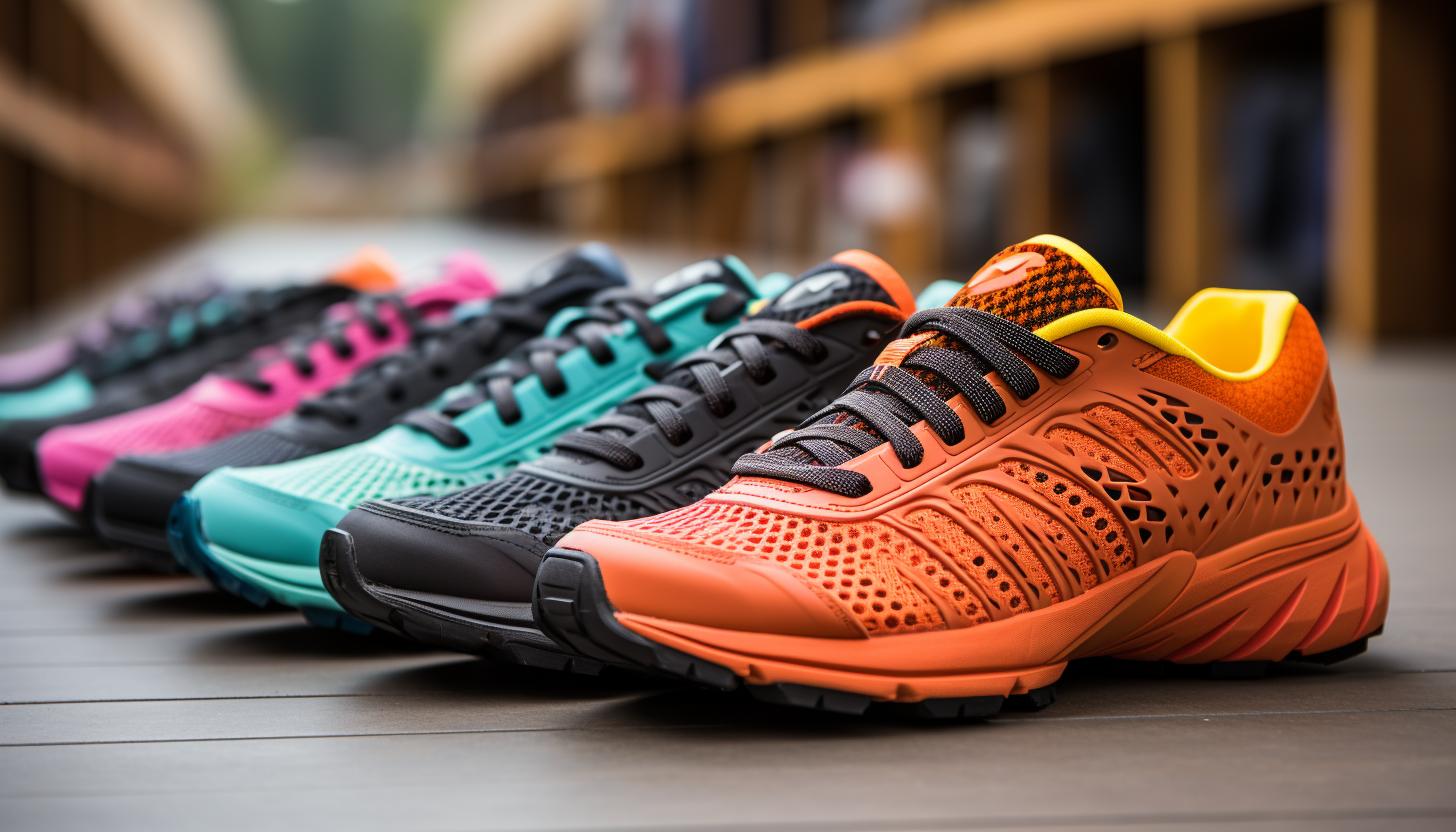
Now that we know the importance of proper shoe fit, let’s take a closer look at the different types of running shoes available. When it comes to choosing the right running shoes for your specific needs, understanding the different options can make all the difference in your comfort and performance. Two popular types of running shoes are minimalist shoes and cushioned shoes.
Minimalist shoes are designed to mimic barefoot running by providing minimal cushioning and support. They have a lightweight and flexible construction, allowing for natural foot movement. Minimalist shoes promote better muscle engagement, proprioception, and an efficient running form. However, they may not be suitable for everyone, especially those who require extra support or have specific foot conditions.
On the other hand, cushioned shoes offer enhanced shock absorption and ample cushioning throughout the midsole. They are ideal for runners who prefer more protection from impact forces or those with high arches or underpronation tendencies. Cushioned shoes provide a plush feel underfoot while still offering stability and support.
To help you understand the differences between these two types of running shoes, here is a comparison table:
| Minimalist Shoes | Cushioned Shoes | |
|---|---|---|
| Weight | Light | Heavier |
| Support | Minimal | Moderate to High |
| Flexibility | High | Moderate |
| Cushioning | Low | High |
Conclusion
Congratulations! You’re now equipped with the knowledge to choose the perfect running shoes for your specific needs.
By understanding your foot type and gait, considering your running terrain and distance, and ensuring a proper shoe fit, you can enhance your performance and prevent injuries.
So lace up those shoes, imagine the feeling of gliding effortlessly through the crisp morning air as you conquer mile after mile.
Let nothing hold you back on your journey to becoming a stronger, faster runner.

